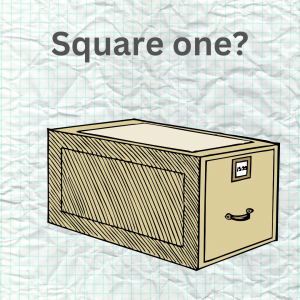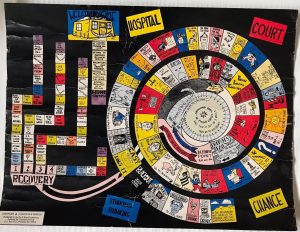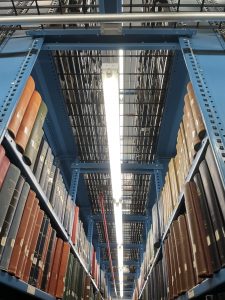 After two weeks of reading previous project documentation and unofficial notes, the initial period of reviewing what we have done is officially over.
After two weeks of reading previous project documentation and unofficial notes, the initial period of reviewing what we have done is officially over.
Were there any surprises other than the moments of satisfaction that we had done everything we could in the past? I wouldn’t say it was a surprise but the breadth and depth of the Alcohol Archives never failed to mesmerize me. It’s fascinating to read, let alone hold in my hands, documents that started it all: the first journal, the first education and training program, the first clinic related to alcohol studies, and for the librarian, the first attempt to collect, index, catalog, and share alcohol literature in the Classified Abstract Archive of the Alcohol Literature (CAAAL).
Where should I start? Unlike at any running event, there’s no clear start line! I already know that there’s no finish line, but no start line either? How about water stops for an alcohol history project (pun intended)?
Sticking with the running metaphor, I decided to consider the Digital Alcohol Archives project as the never-ending career of an athlete, young or master’s age, and just do it as one does one session after the other: lots of slow, everyday practice run, the bread and butter of training, peppered with steady tempo runs and a few speed sessions, when the time feels right. Adding mileage with weekly long runs is also a proven strategy to keep motivated with or without a race on the horizon.
Toeing the Start Line
The first thing I did was taking inventory of the work completed so far as well as to be done in the next six months, which left me with an unorganized but manageable list of resources and tasks.
 items scanned: about 2,000 pdfs and images, about 25 audiovisual materials
items scanned: about 2,000 pdfs and images, about 25 audiovisual materials- condition of items: quality varies, decent pdfs, good jpgs (yet to be converted to tiff), audiovisual items have been digitized
- platforms available and ready to go: RUcore, Omeka, Drupal (in development mode), WordPress (this site) all set up, tested, and have samples uploaded (click on the link to see them grow over time)
- expertise available: myself (knows the collection inside out), one grad assistant (7-8 hours per week), three trusted former CAS Library staff members (with complementary skills, but on a volunteer basis), a digital curator and a metadata librarian to consult (as needed)
- time dedicated: six months of my undivided attention during a sabbatical leave (virtually unheard of, in my experience), aiming for larger percentage of my workload after that
Listing these already makes me feel cautiously optimistic: the bread-and-butter jobs seem to be covered. I need only to break them down to weeks and days within the months, keeping in mind week 4, which is supposed to be a step-back week according to the proven rules of periodization.
I was thinking to establish a more structured way to look back (and forward) as I’ll continue my journaling in public. Including some feel-good headlines, here’s what I first have in mind to review my work and progress periodically. I may add more or drop a few, depending on my reflections and the necessity to document this project.
Accomplishments
New discoveries
Concerns
To do
- digital curator to discuss strategies, timeline, workflow, and best practices
- metadata librarian and grad assistant for official Workflow Management Systems training,
- IIS programmer team to make sure all Drupal elements are in place (Open Source software, locally customized)
- staff at Annex for access to physical files, including research and scanning,
- former CAS staff to pick their brains and work out details of engagement
